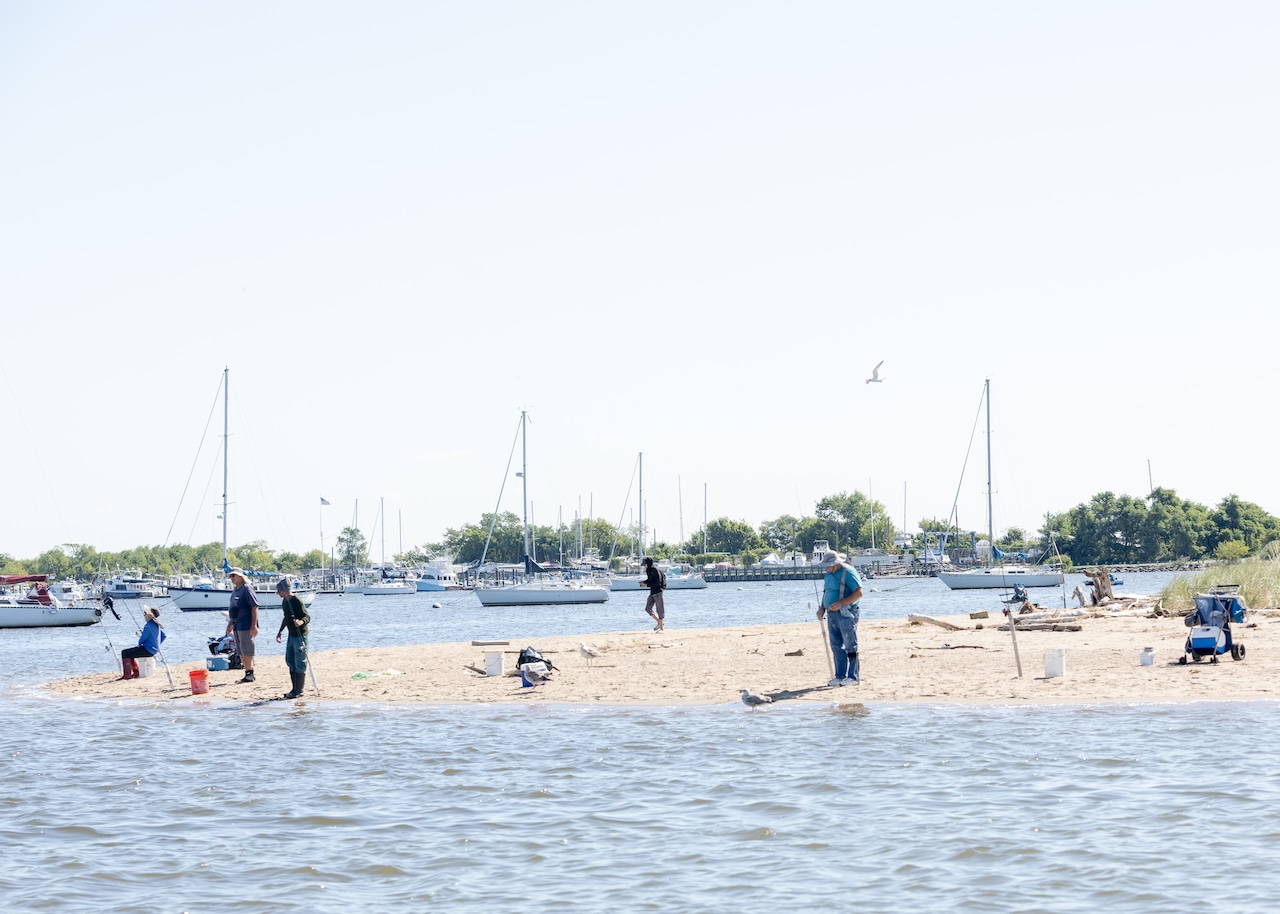Copyright Staten Island Advance

STATEN ISLAND, N.Y. — The Northeast Supply Enhancement pipeline is seeking state approval for a certificate that has been denied three times in the past. The pipeline, also known as NESE, would include a 17.4-mile underwater segment through the Raritan and Lower New York bays, passing Staten Island’s shores. The pipeline failed in 2018, 2019 and 2020 to achieve the Clean Water Act’s Section 401 Water Quality Certification — a legal necessity for the project to move forward. At that time, state environmental agencies that are responsible for the approval were managed by the administration of then-Gov. Andrew Cuomo, who was strongly opposed to the pipeline. Cuomo said in a recent conversation with the Advance/SILive.com that he had fought the project for a decade. Now, advocates who hope to kill the project have coalesced around a similar rallying cry: they say that nothing about the project has changed, and that it should fail approval again. In 2025, however, Gov. Kathy Hochul helms the state, and following reported conversations and negotiation with President Donald Trump, has spoken only neutrally about the project. When asked if Gov. Kathy Hochul is in favor of the gas pipeline construction, Ken Lovett, a senior communications advisor on energy and environment for the governor, said this in July: “The governor has made it clear she is focused on an energy policy that prioritizes affordability and grid reliability. All applications must be reviewed impartially by the required agencies to determine compliance with state and federal laws.” ‘Would not meet New York State’s rigorous water standards’ In its 2020 failure to pass the standards needed to obtain the certification, the state Department of Environmental Conservation (DEC) wrote the following: “DEC has determined construction of the NESE pipeline project would not meet New York State’s rigorous water quality standards. Construction of the proposed project would result in significant water quality impacts resulting from the re-suspension of sediments and other contaminants, including mercury and copper, and would disturb sensitive habitats, including shellfish beds and other bottom-dwelling marine life, clearly demonstrating that a default mixing zone is not appropriate for this project. New York is not prepared to sacrifice the state’s water quality for a project that is not only environmentally harmful, but also unnecessary to meet New York’s energy needs.” The Clean Water Act is the basis for federal water regulations, including “the basic structure for regulating discharges of pollutants into the waters of the United States and regulating quality standards for surface waters,” according to the EPA. Furthermore, the pipeline is still pursuing its Article 15 Protection of Waters permit and its State Pollutant Discharge Elimination System permit. The purpose of Article 15 is to do the following: “The protection of New York’s diverse water resources ensures that our rivers, streams, lakes, and ponds continue to provide essential ecological and commercial services,” said the DEC. “Preserving fish and wildlife habitat, safeguarding our drinking water, and allowing industrial and agricultural ventures to responsibly flourish...” The Article 15 permit, according to the DEC, is a part of the NYSDEC Protection of Waters regulatory program. Article 15 “establishes and enforces regulations,” such as the following, as listed by the DEC: are compatible with the preservation, protection and enhancement of the present and potential values of the water resources; protect the public health and welfare; and are reasonably consistent with the state’s social and economic development. As for the State Pollutant Discharge Elimination System permit, or SPDES, it “is designed to eliminate the pollution of New York waters and to maintain the highest quality of water possible.” This standard of water must be in conjunction with the best interests of, as listed by the DEC: Public health. Public enjoyment of the resource. Protection and propagation of fish and wildlife. Industrial development in the state Next steps According to the DEC, the agency has until Nov. 30, 2025, to take action in regard to the pipeline’s Water Quality Certification process. This timeline is additionally known to the U.S. Army Corps of Engineers, the DEC detailed. The WQC is where the project has been halted every time in the past. Political touchpoint Opposition to the pipeline is a bipartisan unifier on Staten Island during this election cycle. Both incumbent Borough President Vito Fossella and Democratic challenger Michael Colombo expressed their opposition to the Trump-backed pipeline. “We’re hopeful that they’ll [the state] deny it again. Not just because of the environmental potential damage, but we’re asked to assume the burden of it and increase our rates when the power will be used to go to Brooklyn, Queens and Long Island. So, it’s a lose, lose, lose for us in our opinion,” Fossella said, noting he would initiate a lawsuit against the project if the state approves it. Staunch opposition The pipeline is not widely favored on Staten Island, nor is it a shining jewel for over 100 environmental and community organizations. The concern is that should the pipeline be approved, the pipe itself would have to be embedded underneath the settled seabed: stirring up decades worth of contaminated sand and other materials that have since laid dormant. “I can’t underscore enough: Nothing has changed,” said Alex Beauchamp, the northern region director at Food & Water Watch, in July. “Presumably, they should rule that way [denying the project]. Again, of course, everything is actually political, so really the only thing that has changed is who is in the White House. Trump’s been trying to bully Hochul into approving this and another pipeline upstate.” Beauchamp continued: “This is a historically polluted waterway, and in the last relatively few years, you’ve seen a huge comeback, right? Whales are back in New York Harbor, for example. Seals, fish, things that we haven’t seen in a long, long time, because there’s just been a long, long legacy of pollution.” The pipeline, Beauchamp said, threatens all that progress. “Research continues to show that the enormously expensive proposed Williams NESE pipeline is simply not needed to meet current or future energy demand,” said Ellen Weininger, Director of Outreach at Grassroots Environmental Education. “Yet, amid continued rate hikes, National Grid customers across Staten Island, the Rockaways, Brooklyn and Nassau and Suffolk Counties would be footing the bill. Worse yet, the proposed project would disrupt 35 miles of sensitive seabed, unleashing toxic legacy pollution into our sensitive waterways, risking permanent contamination and jeopardizing a $28 billion tourism and recreational economy that supports more than 450,000 jobs in New York and New Jersey,” she added. Pay more, get nothing The project will bring some financial burdens for families across Staten Island. The pipeline will increase National Grid bills by 3.5% for New Yorkers in the five boroughs and Long Island, despite the fact that the gas won’t be delivered to Staten Island, Manhattan, the Bronx, and parts of Long Island. Instead, it will be used by homes in Brooklyn, Queens, and Nassau County. Despite claims that the pipeline will reduce costs once it is completed, Tyson Slocum, the energy program director of the non-profit, non-partisan advocacy organization Public Citizen, is not convinced. Public Citizen filed a protest against the NESE pipeline in the Federal Energy Commission’s docket in late June. “There is nothing conclusive that demonstrates that these things are going to lower energy prices. Energy bills are going up all over the place, regardless of how much pipeline capacity, because data centers and LNG [liquified natural gas] exports are all at record highs,” Slocum said in July.



